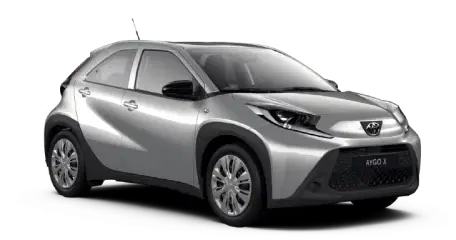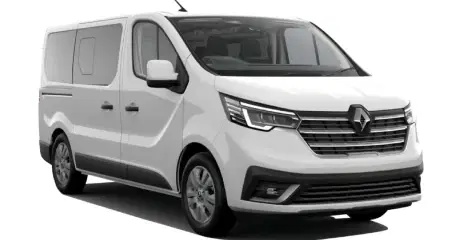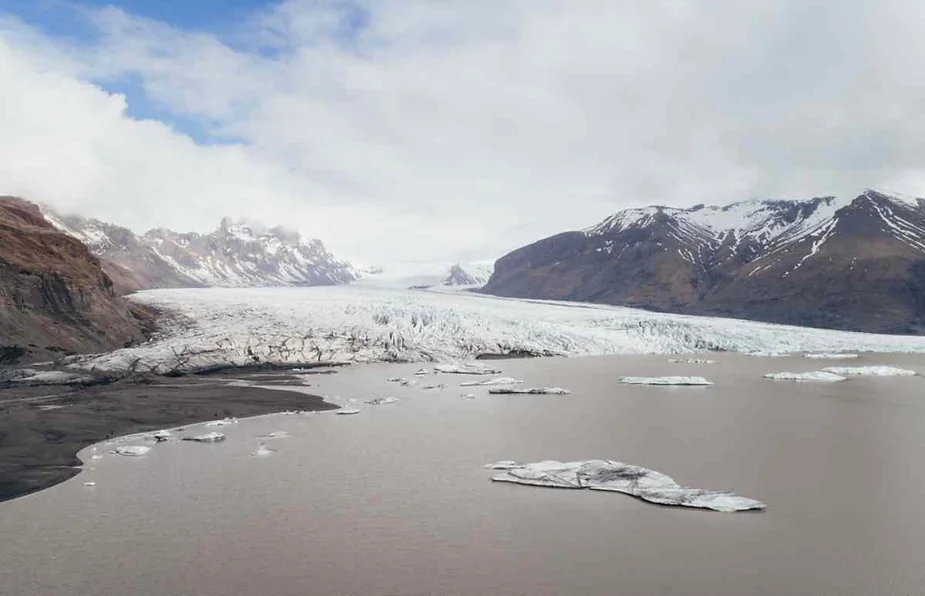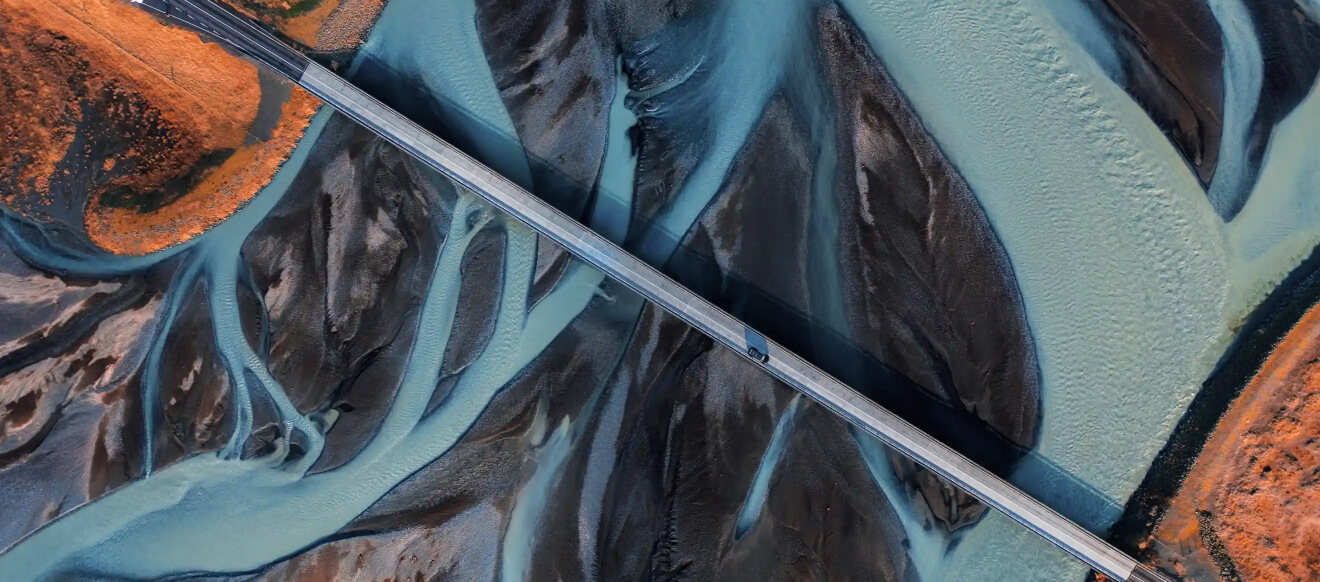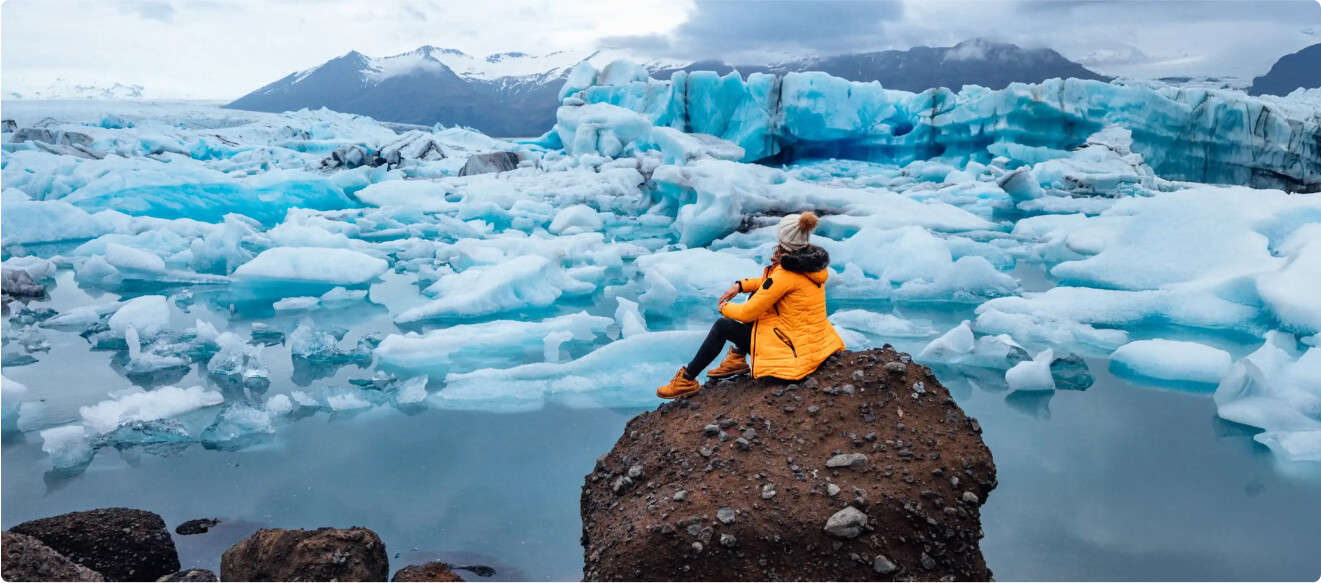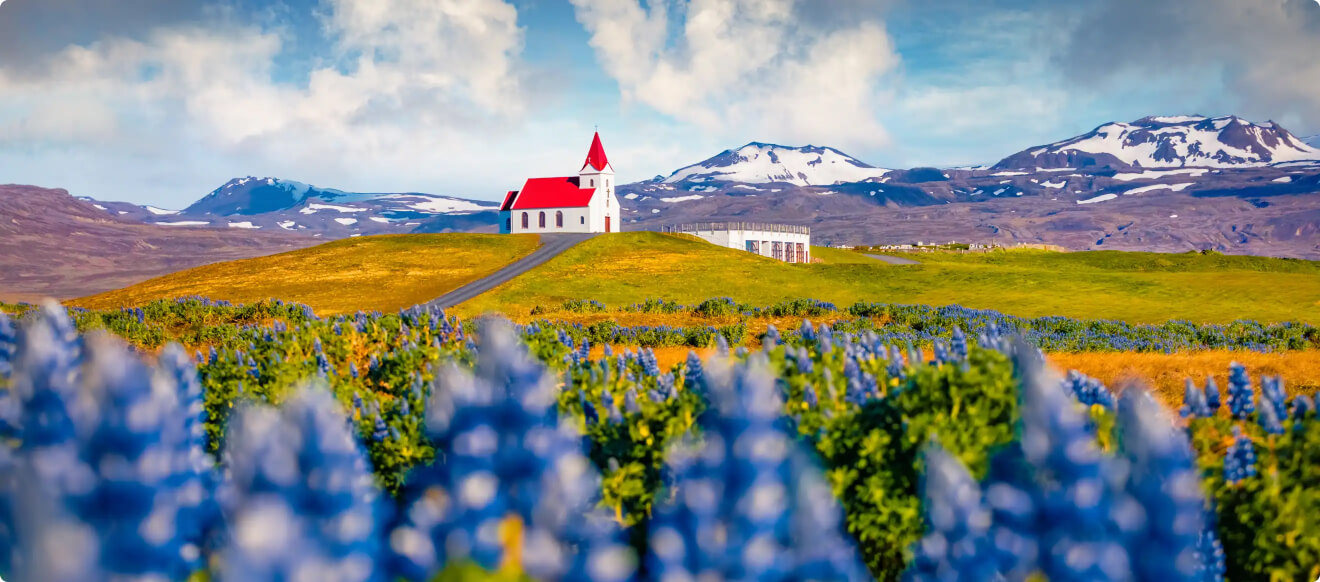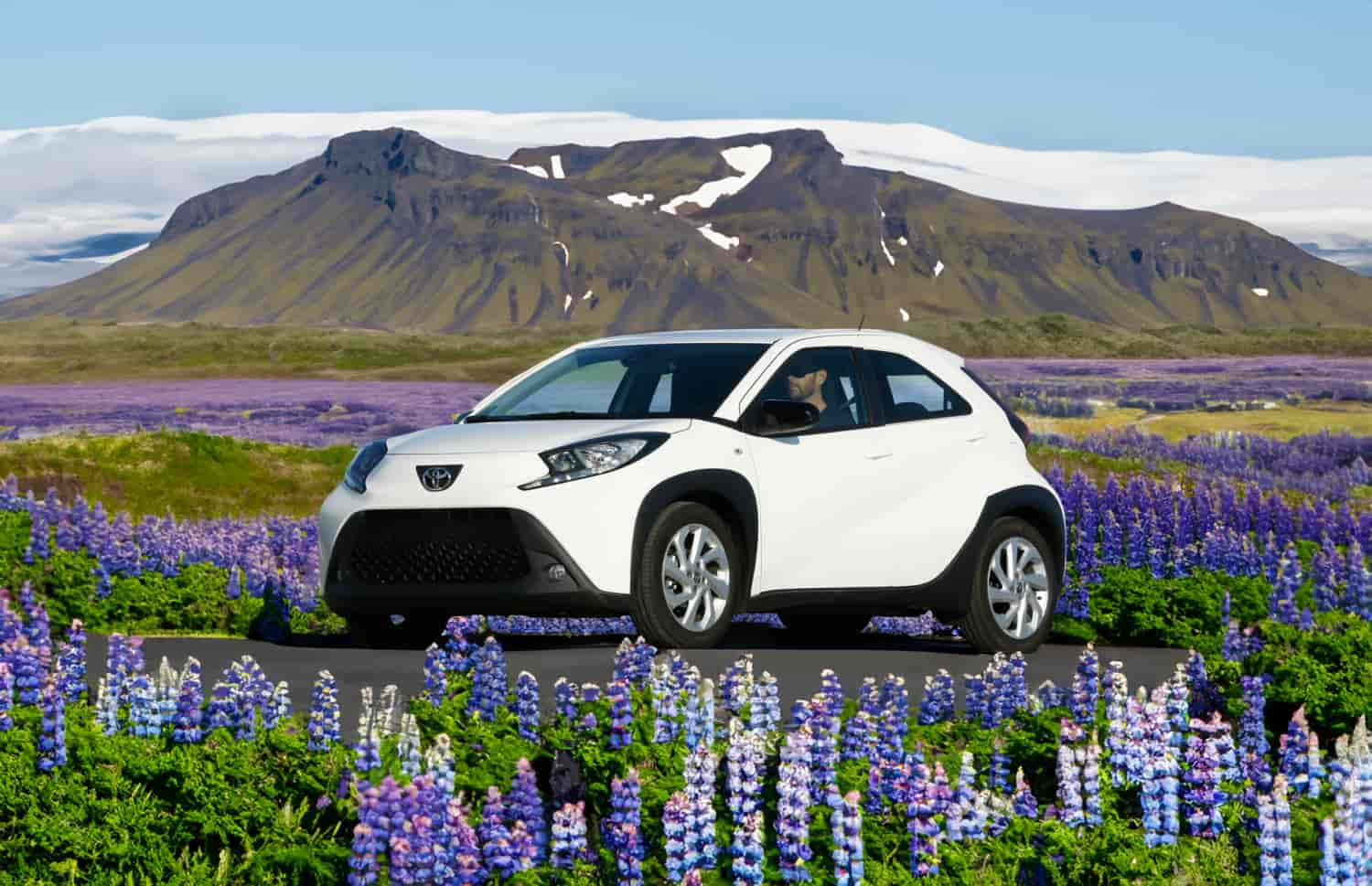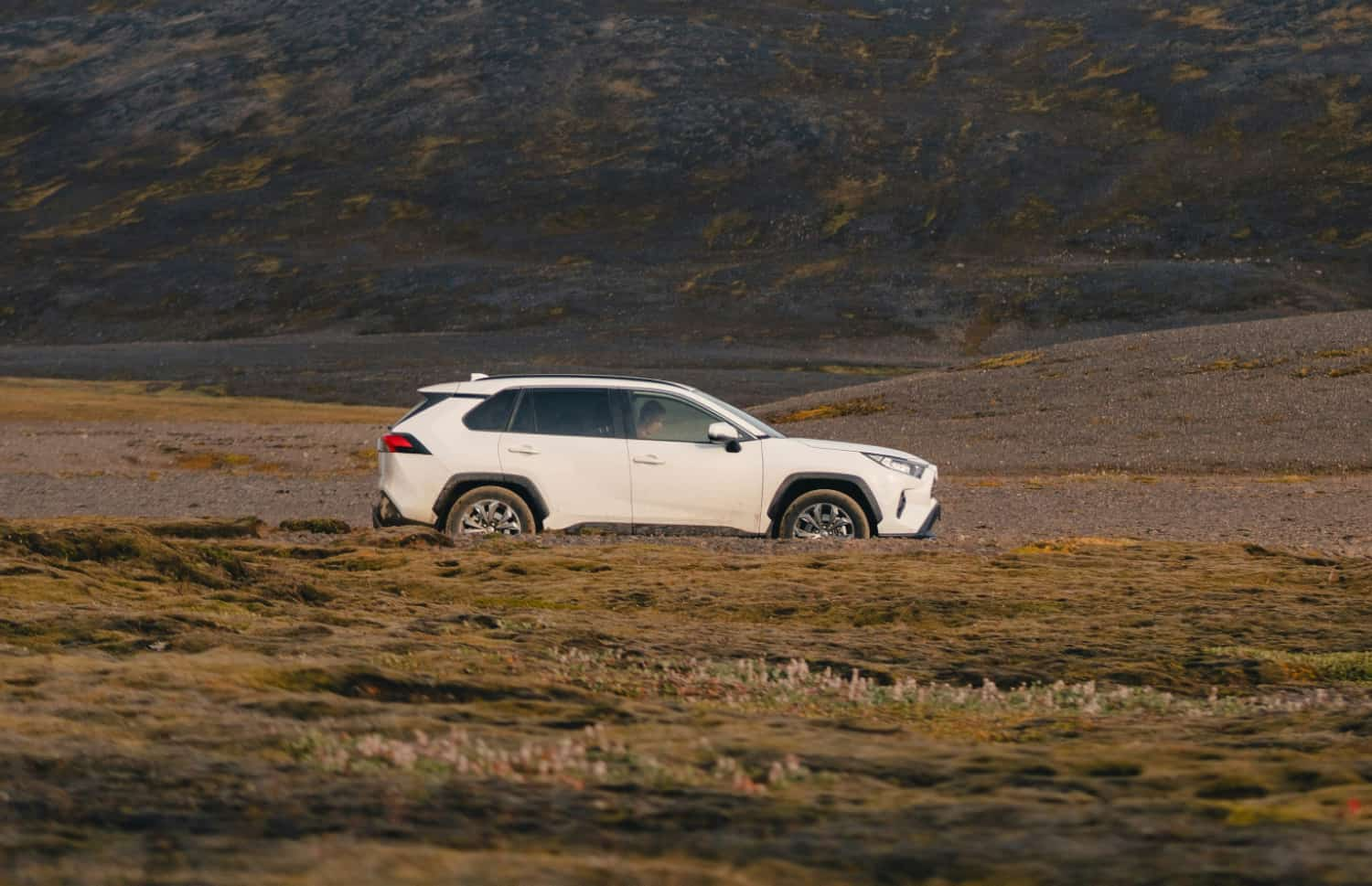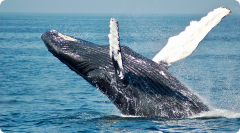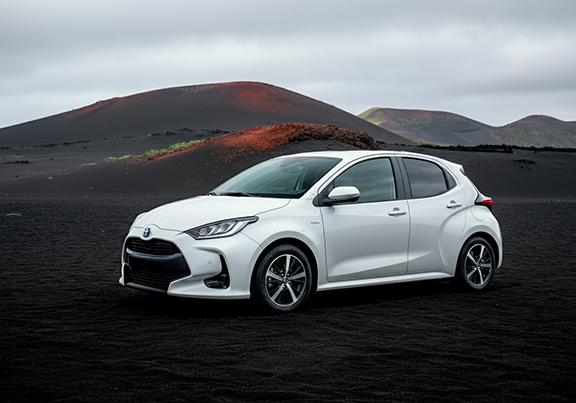Have you ever wondered what it feels like to stand on a glacier that also happens to be a volcano? Welcome to Hofsjökull, Iceland's third-largest glacier, a natural wonder that offers a unique blend of icy grandeur and fiery ambition.
Nestled in the heart of Iceland, Hofsjökull is not just renowned for its majestic ice cap but also for its hidden volcanic power beneath the surface. In this guide, we'll explore everything you need to know about this extraordinary glacier, from its geographical features to tourism highlights and conservation efforts. We hope you are ready for the adventure of a lifetime!
Geographical and Physical Features of Hofsjokull Glacier
Hofsjökull boasts an impressive range of geographical and physical features that captivate any visitor. From its expansive ice cap to its significant volcanic elements, this glacier offers a compelling study of natural contrasts. Let's take a closer look.
Location and Size
Situated in the rugged western part of the Highlands of Iceland, Hofsjökull stands proudly as the island nation's third-largest ice cap, following Vatnajökull and Langjökull in size. You'll find this icy giant nestled north of the stunning Kerlingarfjöll mountain range, making it a striking feature in an already dramatic landscape.
Covering an impressive area of approximately 925 square kilometers (357 square miles), Hofsjökull is a massive presence that's hard to miss. The glacier reaches its highest elevation at the summit, standing tall at 1,782 meters (5,846 feet).
Ice Cap Characteristics
Hofsjökull's ice cap is a striking feature with its distinctive dome-like shape and gentle surface slopes. This majestic dome spans an elevation range from 650 meters (2,133 feet) to 1,800 meters (5,906 feet), creating a captivating landscape that changes with altitude. The ice cap spans a diameter of approximately 40 kilometers (25 miles), making it a significant icy behemoth in the heart of Iceland.
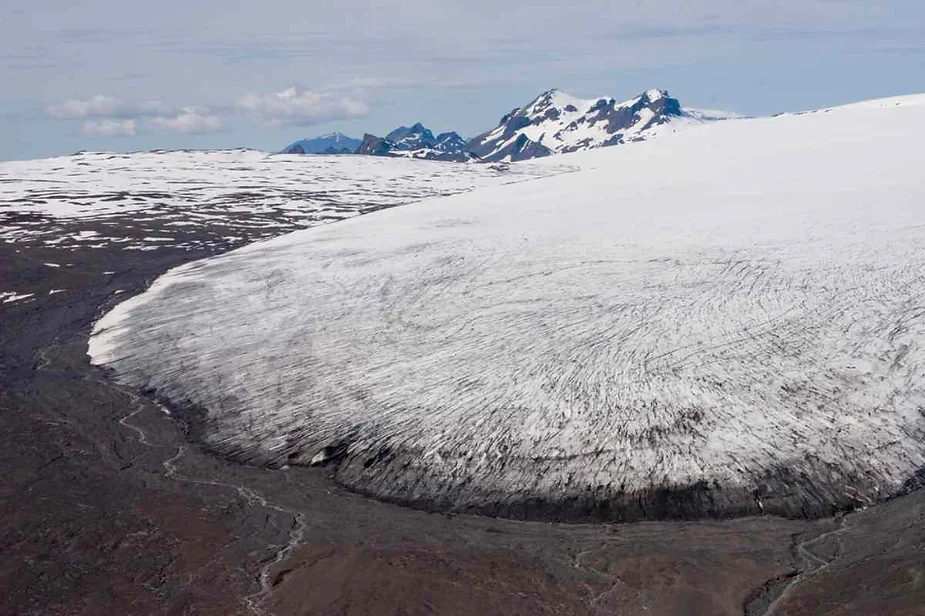
Volcano System
Underneath the tranquil expanse of the Hofsjökull ice cap lies a thrilling subglacial volcanic system. The Hofsjökull ice cap conceals an active central volcano with a fascinating central caldera, approximately 7 by 11 kilometers (4.3 by 6.8 miles) in size.
This intricate caldera is semi-circular or horseshoe-shaped, likely due to various past volcanic activity and collapse events within the volcano. Unlike more explosive volcanoes, Hofsjökull's central shield-type volcano exhibits relatively non-explosive eruptions, adding to the region's intriguing geological diversity.
But there's more—a network of 3-4 fissure swarms extends from this central volcano, stretching either northwards or southwards beneath the glacier. One of these fissure systems even includes the Kerlingarfjöll central volcano to the south.
Eruption History
Despite its quiet demeanor today, Hofsjökull has an intriguing and active past as a volcano. The Global Volcanism Program notes that there have been no Holocene eruptions (within the last 10,000 years), suggesting Hofsjökull has been relatively dormant during the current interglacial period. However, it's believed that Hofsjökull was quite active during the past two ice ages and the previous interstadial period, over 120,000 years ago.
Evidence of this can be seen in the rhyolite peaks and nunataks protruding above the current ice cap, indicating volcanic activity in times when the ice cover was absent. Furthermore, an ash layer found in North Atlantic sediments dated to around 305,000 years ago is tentatively linked to an eruption from either Hofsjökull or the nearby Krafla volcano.
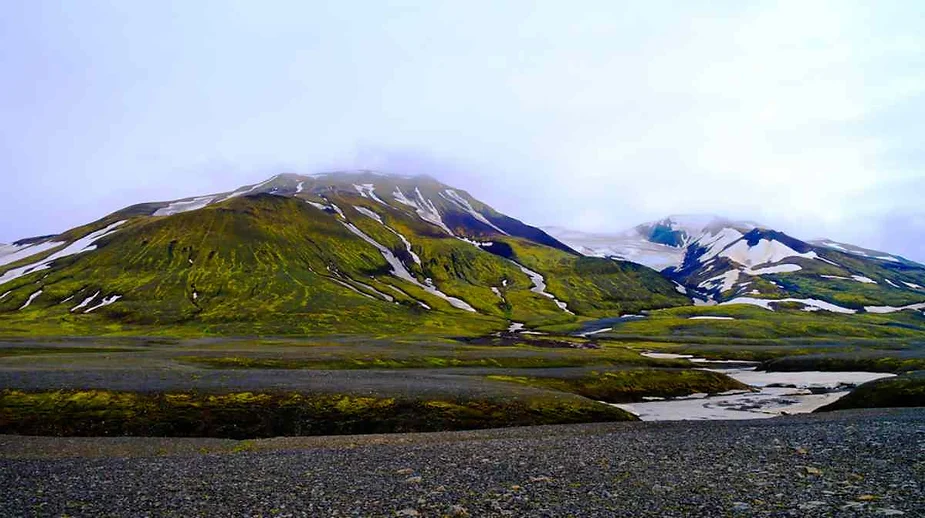
Despite the lack of recent eruptions, Hofsjökull remains an active volcanic system. This is evidenced by the presence of high-temperature geothermal areas linked to the central volcano and fissure swarms, earthquake swarms on the western and northern flanks between 1996-2013, and a sulfurous jökulhlaup (glacial outburst flood) in 2013 that created a new ice cauldron.
Hydrology and Rivers
Did you know that Hofsjökull is a significant source of some of Iceland's most critical rivers? As with most glaciers, Hofsjökull is an essential contributor to the country's hydrological balance, providing essential water for both human consumption and agricultural purposes.
Source of Major Rivers
Hofsjökull glacier is the birthplace of some major rivers in Iceland. One of them is the Þjórsá River, Iceland's longest river, stretching 230 kilometers (143 miles) to the south coast. It's a hot spot for river rafting, canoeing, and kayaking. Another significant river is the Blanda River, which flows 125 kilometers (78 miles) and reaches the town of Blönduós on the north coast of Iceland.
Hydrology and Rivers
Did you know that Hofsjökull is a significant source of some of Iceland's most critical rivers? As with most glaciers, Hofsjökull is an essential contributor to the country's hydrological balance, providing essential water for both human consumption and agricultural purposes.
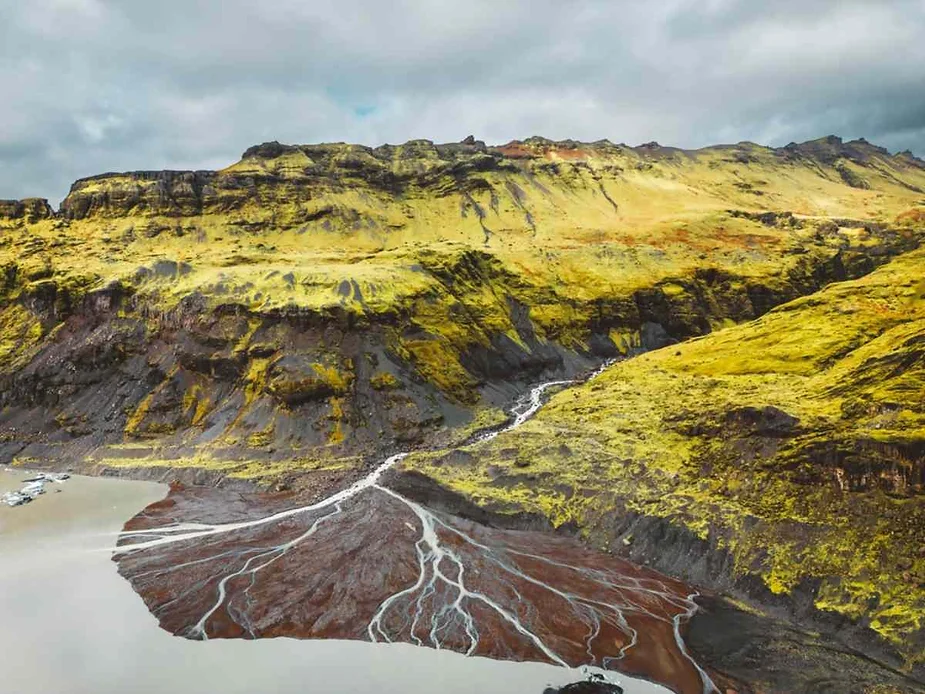
Source of Major Rivers
Hofsjökull glacier is the birthplace of some major rivers in Iceland. One of them is the Þjórsá River, Iceland's longest river, stretching 230 kilometers (143 miles) to the south coast. It's a hot spot for river rafting, canoeing, and kayaking. Another significant river is the Blanda River, which flows 125 kilometers (78 miles) and reaches the town of Blönduós on the north coast of Iceland.
Hydropower and Environmental Impact
Did you know that multiple hydropower plants have been constructed along the Þjórsá and Blanda rivers to generate electricity using the flowing glacial meltwater? Hydropower accounts for about 73% of Iceland's electricity production, taking advantage of the country's many glacial rivers.
The construction of hydropower reservoirs and dams has submerged around 62 square kilometers (24 square miles) of land, some of which was vegetated. The natural flow of rivers like the Blanda has been altered, although the water has become clearer.
As compensation, the power company has financed fencing, huts, stables, road construction, and land reclamation in the affected areas. Increased meltwater flux from glaciers into the oceans may have implications for sea level rise and the hydropower industry.
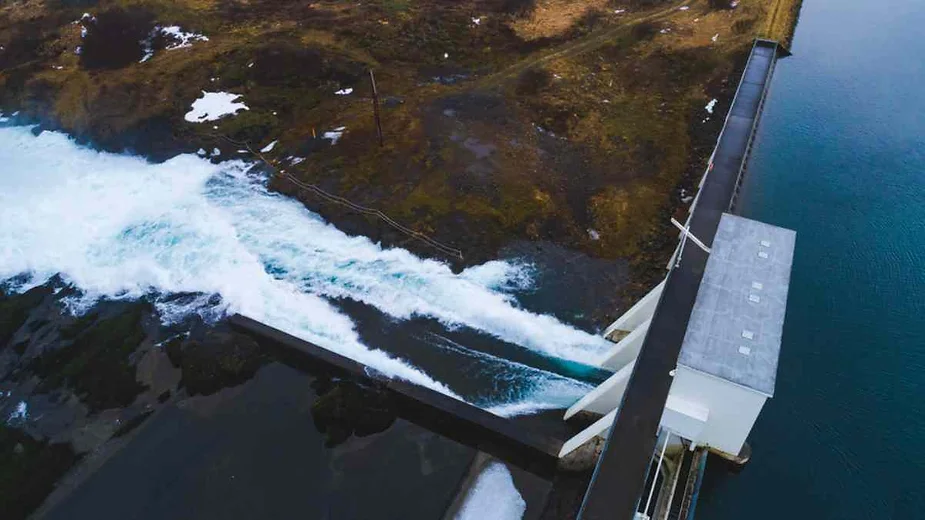
Climate Change and Glacial Changes in Iceland
As we all know, the effects of climate change are being felt globally, and Hofsjökull is no exception. But how is this changing environment impacting the glacier, and what does the future hold?
Historical Changes in Mass and Volume
Between 1989 and 2015, Hofsjökull lost about 12% of its 1989 volume, which translates to nearly 25 cubic kilometers (6 cubic miles) of ice. During this period, the glacier's mass balance was negative for 23 out of 27 years, indicating a significant loss of ice. However, in 2015, Hofsjökull experienced a positive mass balance for the first time in two decades.
This was largely due to higher-than-average winter precipitation coupled with a relatively cool summer, which resulted in reduced melting. In 2015, the equilibrium line altitude was 150-200 meters (492-656 feet) below the average, with summer ablation being less than 50% of the 1995-2014 average. Going further back, between 1890-1945, Hofsjökull likely had a slightly negative mass balance based on volume-area scaling estimates.
From 1945-1970, the glacier's mass balance worsened significantly, leading to considerable ice cap volume loss. Since the 1970s, Hofsjökull has seen cycles of near-zero mass balance interspersed with periods of mass loss, reflecting the changing climatic conditions over the years.
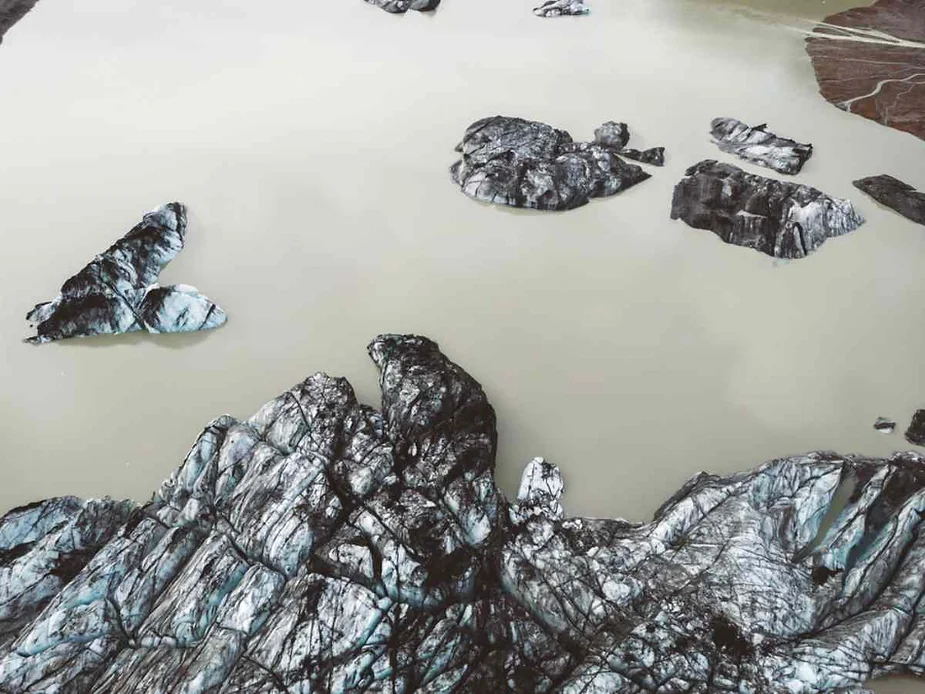
Future Projections
Model simulations using data from 1980-2005 predict a rather bleak future for Hofsjökull if current climate trends persist. Complete ice loss is anticipated in approximately 200 years. Within the next century, Hofsjökull is expected to lose 20-30% of its volume, with lower elevations experiencing the most significant reductions. These projections suggest that most of Hofsjökull will almost disappear in 100-200 years due to substantial rises in average temperatures.
To put things in perspective, Langjökull, Iceland's second-largest ice cap, may vanish after 150 model years under similar scenarios. However, some hope persists; the highest peaks of Hofsjökull, along with the larger Vatnajökull ice cap, may survive longer than 200 years. The rate of retreat mirrors that of Vatnajökull, but it's much faster for the thinner Langjökull.
Winter precipitation and summer temperatures primarily influence Hofsjökull's mass balance. Predictions assume a mean warming of 2.5-3°C (36.5-37.4°F) between 1961-1990 and 2071-2100, with the greatest warmth in spring and fall. While precipitation changes are small overall, fall may see up to a 10-20% increase.

Top Things To See and Do
While the prospect of Hofsjökull shrinking may be upsetting, it still invites nature enthusiasts to explore its beauty. The glacier offers various activities such as ice climbing, snowmobiling, and hiking.
Popular Activities
Here are some of the popular activities offered on Hofsjökull glacier:
Ice Hiking
Ice hiking on Hofsjökull offers an exhilarating adventure. Trekking across sparkling ice fields and exploring crevasses gives you a close-up view of this stunning glacier. Guided tours ensure a safe, enriching experience, allowing you to appreciate the intricate ice formations and breathtaking landscapes of one of Iceland's natural treasures.
Snowmobiling
Snowmobiling on Hofsjökull is a thrilling way to experience the glacier's expanse. You can catch a guided tour from Reykjavik, where you will drive through the Icelandic countryside to reach the glacier and embark on a high-speed snowmobile adventure. You can also combine this activity with other attractions such as visiting a nearby ice cave or relaxing in natural hot springs.
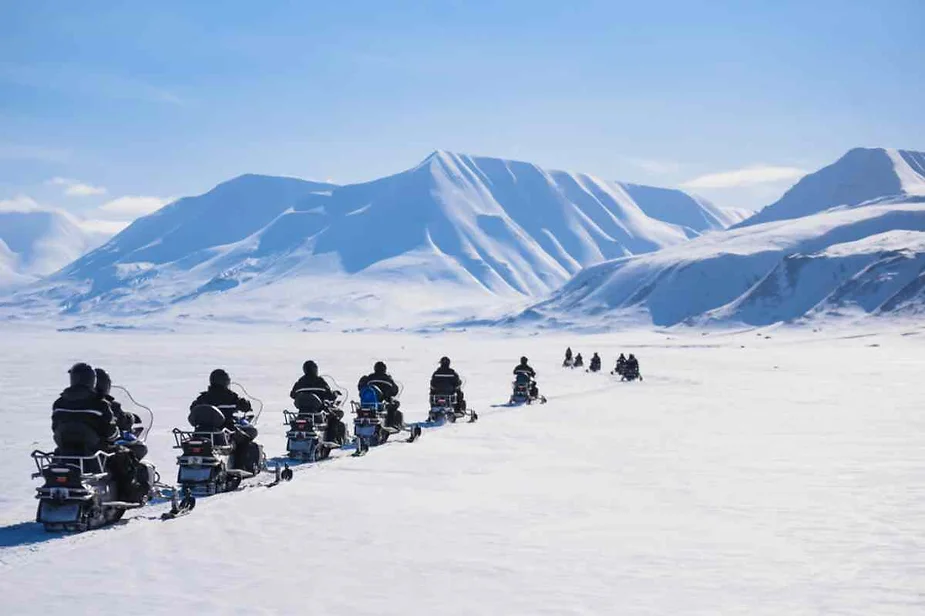
Ice Caving
If you want to explore underneath the glacier, you will need a guide to ensure safety and navigate through the intricate ice structures. These tours often include a visit to nearby glaciers and waterfalls, providing an immersive experience of Iceland's unique landscape.
Nearby Attractions
Exploring Hofsjökull glacier offers you the chance to discover some incredible nearby attractions. Here are a couple you shouldn't miss:
Haukadalur Geothermal Area
Not far from Hofsjökull, you'll find the Haukadalur valley, renowned for its geothermal activity. The area hosts the famous geysers Strokkur and Geysir – the latter lending its name to geysers worldwide. Strokkur erupts every few minutes, shooting boiling water up to 20-30 meters (65-98 feet) into the air, providing a spectacularly photogenic experience.
Kerlingarfjöll
Located in the highlands near Hofsjökull, Kerlingarfjöll is a mountain range renowned for its colorful rhyolite mountains and hot springs. It offers an excellent opportunity for hiking and exploring off-the-beaten-path landscapes.
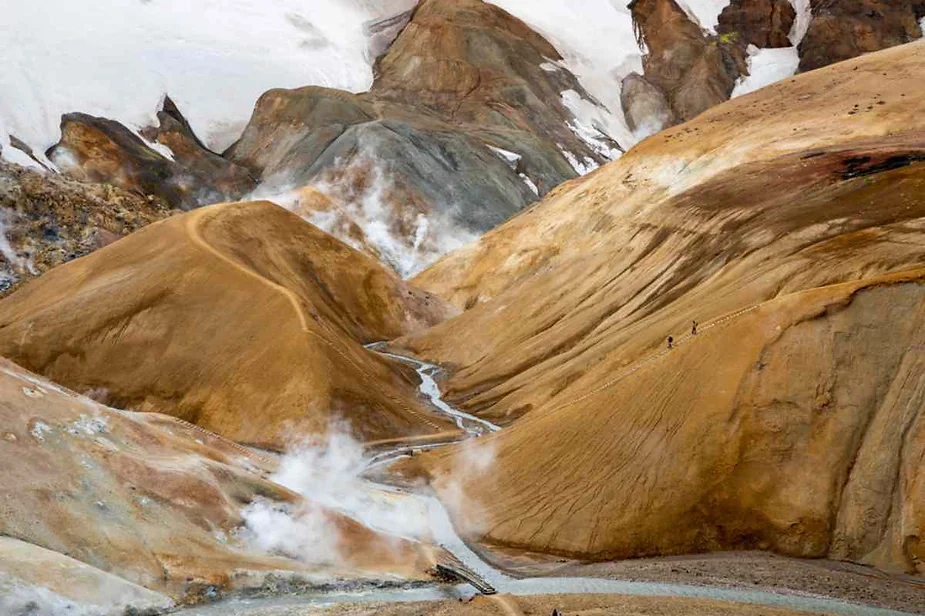
Safety and Travel Tips
As with any glacier adventure, it's crucial to prioritize safety and respect the environment. Leaping into crevasses, entering ice caves without proper equipment, or venturing too far from marked paths can be dangerous.
Precautions for Visitors
For all the adventurers planning to explore Hofsjökull, it's essential to be well-prepared and prioritize safety. Here are some tips to ensure a safe and enjoyable visit:
-
Hire a Guide: Always consider joining guided tours. Professional guides are knowledgeable about the terrain, weather conditions, and safety protocols.
-
Dress Appropriately: Wear layered clothing, waterproof and windproof outerwear, gloves, and a hat. Icelandic weather can be unpredictable, so it's important to stay warm and dry.
-
Check the Weather: Always check the weather forecast before setting out. Iceland's weather can change rapidly, and it's crucial to plan accordingly.
-
Stay Hydrated and Fed: Bring plenty of water and high-energy snacks. The cold can deplete your energy faster than you might expect.
-
Inform Someone of Your Plans: Always let someone know your itinerary, including your expected return time.
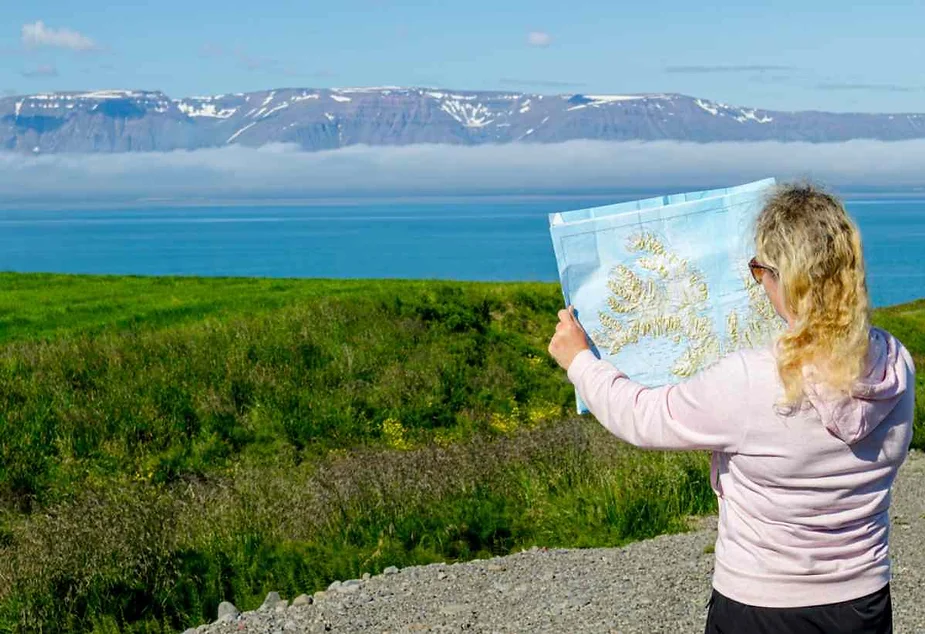
Best Times to Visit
Choosing the right season for your visit can enhance your experience on Hofsjökull glacier. Here's a breakdown of the best times for different activities:
-
Ice Hiking: Summer (June to August) offers milder weather and longer daylight hours, making it ideal for ice hiking.
-
Snowmobiling: Winter in Iceland (December to March) provides the best conditions for snowmobiling, with plenty of fresh snow and crisp air.
-
Ice Caving: Late winter to early spring (February to April) is perfect for ice caving, as the ice structures are more stable.
Conservation Efforts
The Icelandic government are actively involved in monitoring and preserving Hofsjökull glacier. They regularly conduct research to study its changing conditions and educate the public about the importance of protecting this natural wonder.
Environmental Monitoring
To keep Hofsjökull glacier in peak condition, annual measurements of glacier mass balance are carried out. Production of digital elevation models of the ice-cap surface occurs every few years to give a precise picture of changes.
Regular visits to the ice cap margin ensure ongoing changes are closely observed. Additionally, the measurements of discharge and liquid conductivity in rivers flowing from the ice cap provide vital data.
Meteorological observations at one CryoNet station near the ice cap and at four additional AWS's track weather changes. Moreover, snow cover observations at three key locations, and intermittent permafrost studies above 600 m, add to the comprehensive monitoring efforts.
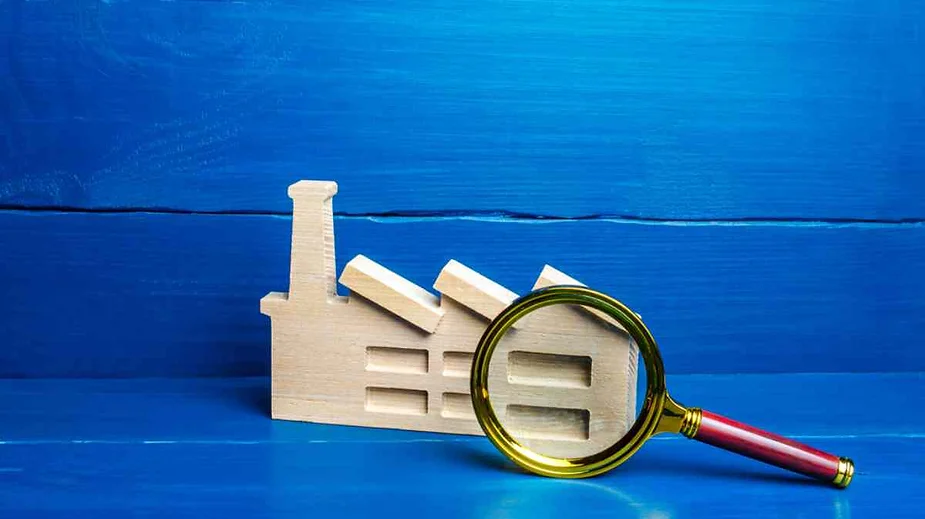
The Beauty of Hofsjökull Glacier
Exploring Hofsjökull glacier is a once-in-a-lifetime experience that combines adventure, natural beauty, and a chance to witness one of Iceland's incredible landscapes. Whether you're hiking, snowmobiling, or visiting nearby geothermal areas, Hofsjökull offers something for every outdoor enthusiast.
As climate change continues to impact glaciers worldwide, there's no better time than now to rent a car in Iceland and embark on this unforgettable journey. Don't miss the opportunity to see this majestic glacier before it changes forever. Start planning your adventure today and make memories that will last a lifetime.





